It’s often hard to know if you're on track with training and providing the correct stimuli to the athletes in each training cycle. For the longest time, coaches have resorted to prescribing test sets to determine if their training plan is working.
Test sets however only offer one piece of the puzzle, a snapshot of the swimmers' fitness level and how they adapt to training. The pitfall of this is that building the athlete ''engine'' will only get your swimmers so far. This is why it's crucial to track how their technique progresses over time and how much load they're dealing with alongside their energy system adaptations.
Long-term tracking of changes in the athlete's fitness, training load and technique will offer you a 360 view of their performance. In this blog, we will explore how you can take all this information and feed it into your yearly training plan.
To do this, we developed a framework called Focused Iterative Training. FIT helps you optimize your seasonal plan in 3 simple steps:
- Observe how workouts are executed.
- Discover where athletes are lagging behind.
- Adjust training through guided feedback.
Our focus on this article is on the Discover phase. During this phase you're trying to find the areas where just a few tweaks in the swimmers load, technique or effort could lead to even more success.
In our previous article we explored the Observe phase, if you missed it click here to learn more.
Discover what needs tweaking in your plan
1. Training Load
Most coaches typically plan workout distance, set distance, set intensity and pace times to keep track of load. The first challenge with this is that what was planned and what happens during practice may not match. Several things can disrupt the plan, like skipped practices or changes to the workout when its not effective.
Another challenge is that metrics like distance, duration, and times are all external factors of load. To accurately monitor training load you must also consider the internal factors influencing performance. For example sleep, nutrition, hydration, stress, school, relationships etc. Athlete input on how load (external and internal) is impacting them will help you understand why they are responding to training the way they are.
Why is monitoring load important?
Despite the increased focus on well-designed training programs in swimming, we still have a relatively high occurrence of injury, illness, and undesired competition results. This is in part because coaches rely on their experience and intuition to gauge how hard an athlete is training and determine how much more training intensity they can undertake.
However, the complex nature of load and the interactions between the external and internal factors impacting it, make it difficult to determine how much more training stress each athlete can withstand. For coaches this means that simply planning volume and intensity and relying on intuition may not be the most reliable methods to monitor training load. You need a way to accurately track all activities (both in and out of the water) and how intense these activities felt for each swimmer.
How to use Readiness to monitor load and iterate your plan?
The TritonWear Readiness score measures both external and internal load by combining exercise volume/duration and intensity with workout rating (given by the athlete).
As mentioned above, to accurately monitor load, all training sessions including swimming, strength training, biking, or yoga need to be tracked. All activities, and their ratings, combine to generate the athlete’s overall load.
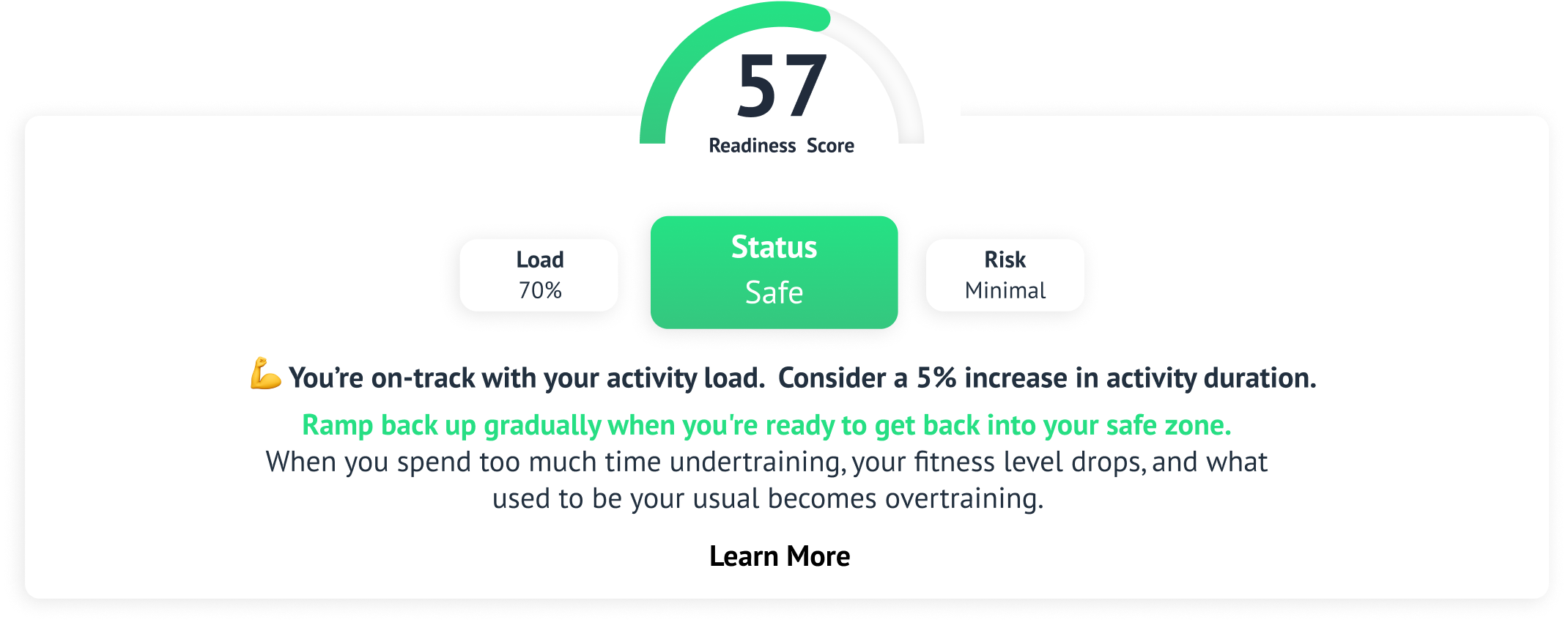
The Readiness score does the work for you by comparing their 7-day load against their 28-day load. You can discover how much each workout is affecting their readiness to train so you can adjust their sets or dryland accordingly; this way, you don't have to constantly ask your athletes how they're feeling.
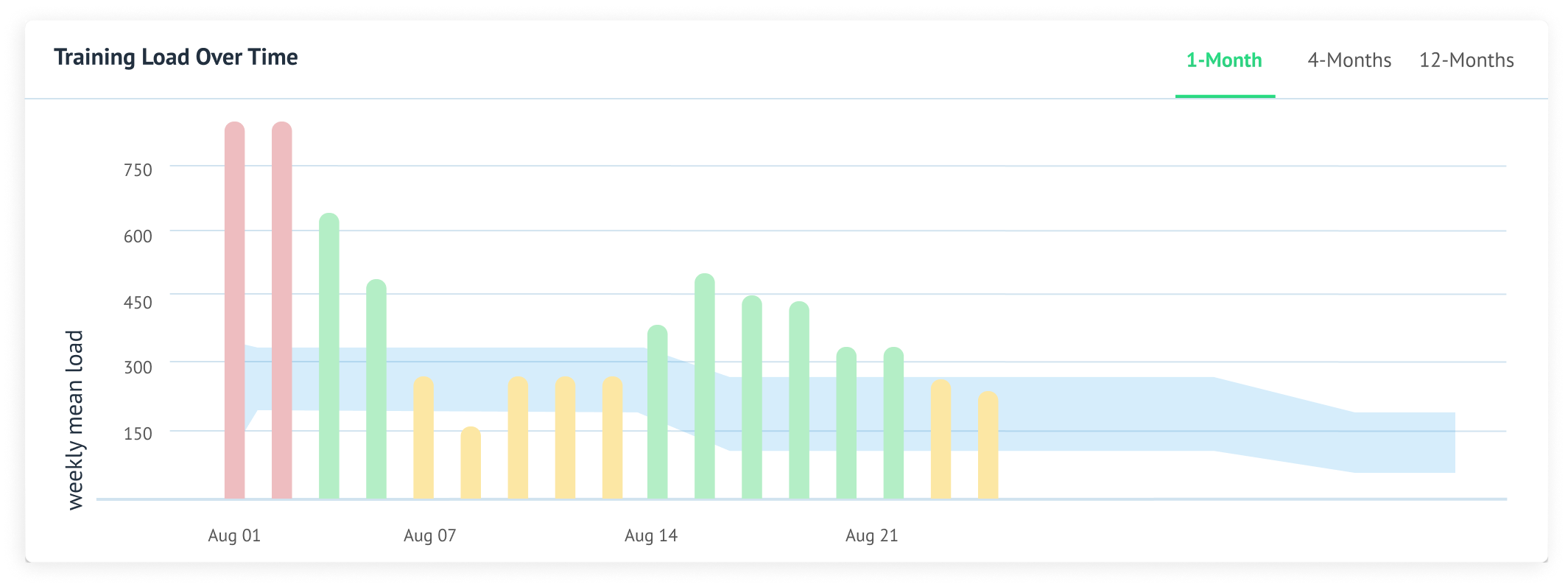
In the app, the Training Load Over Time graph offers you an overview of how your plan is working. The bars show you the athlete's past performances and how safely they have been training, while the river plot shows you how much more load they can safely take.
Each swimmer's river will differ in size and change depending on their load averages over the past 28 days. This graph should be used with the Readiness Recommendations to help as a feedback loop to your training plan over the next cycles.
2. Technical Skills
Although it is commonplace for coaches to use timing and compare splits to gauge progress, it can be difficult to determine which skills contributed to the athletes' times. Furthermore, it can be challenging to assess whether swimmers are retaining the skills they're training on during practice.
Assessing your swimmer's progress through training data gives you an accurate picture of their technical skills today and lets you see improvements over time. A visual representation of skill progression lets you know that training is paying off.
Why tracking behavioral changes is important?
The tendency to want immediate results from things that take time, understanding and a lot of data to produce conclusions is the primary problem with limited data sets. This includes switching trackers between users or only collecting data during test sets. Data have little meaning if they are not actionable. You can't make significant changes in a short amount of time if you don't have access to all the information you need.
Behavioural change in the water begins with small tweaks that eventually add up to a larger impact. The more you track athlete data the more drawn your swimmers will be towards making small changes in their technique to unleash their speed.
Although TritonWear extrapolates the statistical analysis required to find correlations, it is also encouraging to look at data in the app from a trend basis. Day-to-day correlations are somewhat meaningful, but month-over-month correlations are pretty powerful.
How to use Focus to monitor skill progression and iterate your plan?
TritonWear Focus, shows you not only how your swimmers skills are progressing for each stroke (My Average) but also how their skills compare to other swimmers of the same speed, competing gender, and height(Like Me). Metrics with the lowest score are their lowest hanging fruits making it easier to determine which skills to tagret first during the prep phase of your training cycle.
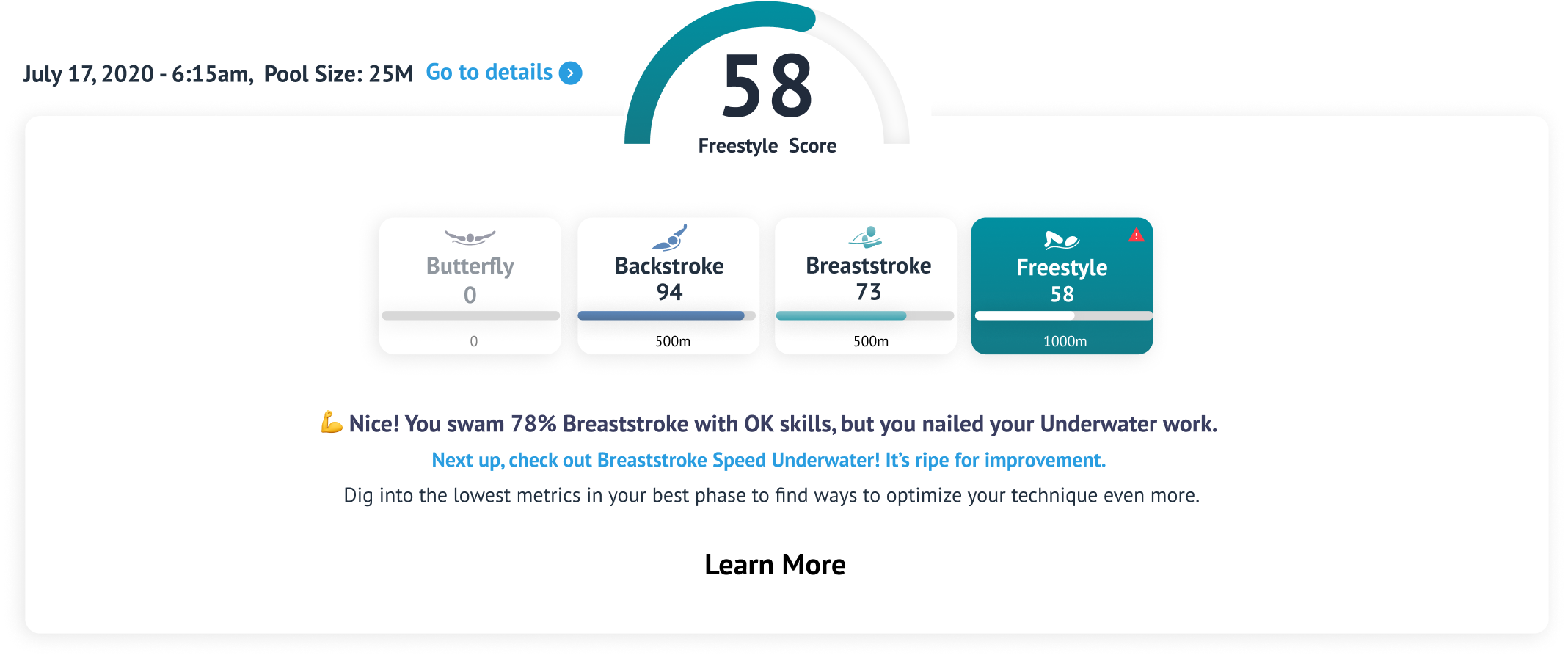
The Focus 'Like Me'' comparison, will show how your athletes match up against their competition in each of their skills. You can then use this intel and target the technical components that will deliver the bigest improvements.
Keep in mind that it is crucial to maintain a balance between metric trade-offs. For example, if their speed decreases because of an increase in Stroke Rate, you will observe a significant decrease in their DPS. The fastest swimmers will have the highest Stroke Rate compared to their DPS or vice a versa.
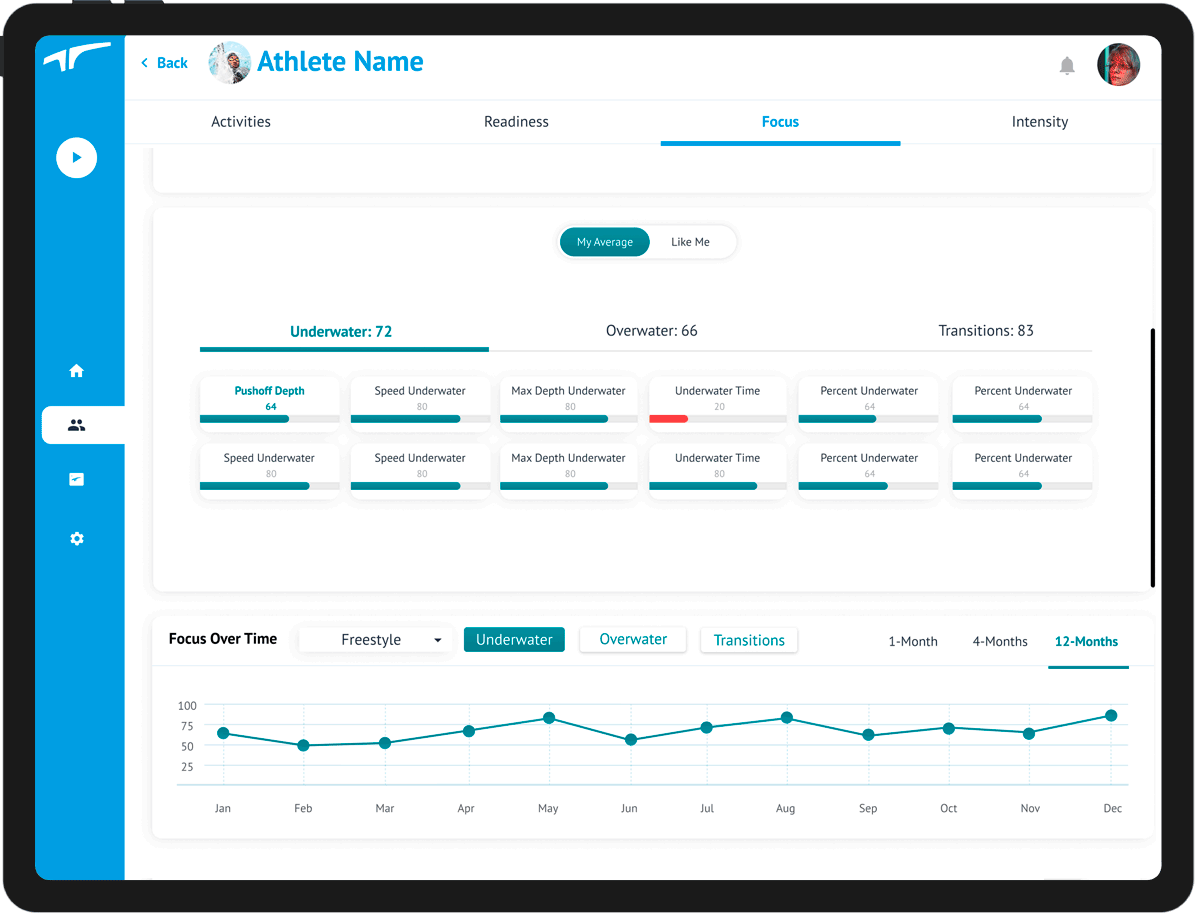
3. Athlete Exertion
Aside from load and skills, coaches also plan the intensity they want swimmers to hit by prescribing training zones, and ensuring there is enough variety to train all the different energy systems. Zone mapping is commonly done through lactate testing or different testing protocols in swimming.
However, even though lactate testing provides reliable evidence of physiological adaptations, it also requires safety measures, expertise, money and time to run it. Furthermore, manually testing of this nature doesn't automatically change as the athlete becomes fitter. To accurately track fitness progress, testing of this nature needs to be repeated several times over the season. This means that testing days are vulnerable to swimmers being absent or sick, which in turn results in the disruption of further practices.
Why is monitoring athlete exertion important?
Well-designed training plans include the intensity, duration and frequency of training stimuli. To train swimmers efficiently coaches tweak the combination of these three components. How much they tweak each one depends on the racing event, its duration and the metabolic requirements to perform in it.
Monitoring athlete exertion and adaptation to training over time offers you the ability to assess the program and predict performance. It shows you how training is split between aerobic and anaerobic work, and how your swimmers respond to training. This way, you can tweak your workouts to hit the correct zones based on where you are in your swim season.
How to use Intensity to monitor athlete exertion and iterate your plan?
TritonWear Intensity measures athlete exertion based on the energy systems engaged, the distance and the work vs rest ratio. In detail, the training zones are mapped out based on the swimmers Critical Swim Speed, CSS. Automated CSS can replace time-consuming test sets and expensive lactate testing, and offer you insights into your swimmers evolving training zones.
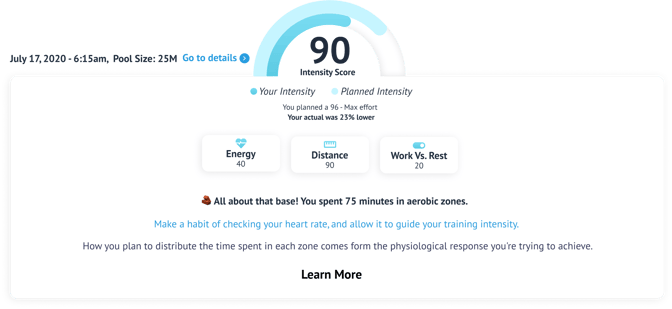
By diving deeper into each Intensity insight you'll discover how your workouts truly translate into energy system usage, distance, and work-to-rest ratio. In detail, the Energy score considers how much time the athletes spend training in each zone. The more time they train in anaerobic zones (zone 4, and 5) the higher the Energy score. Finally, Distance looks at the mileage your swimmers clocked that day relative to how much they usually do in a workout, whereas Work to Rest checks how much of the workout was spent actively swimming.
Learn how different sets impact each athlete, to find the best way to prepare them for racing. With this information, you can find the areas where just a few tweaks could lead to even more success.
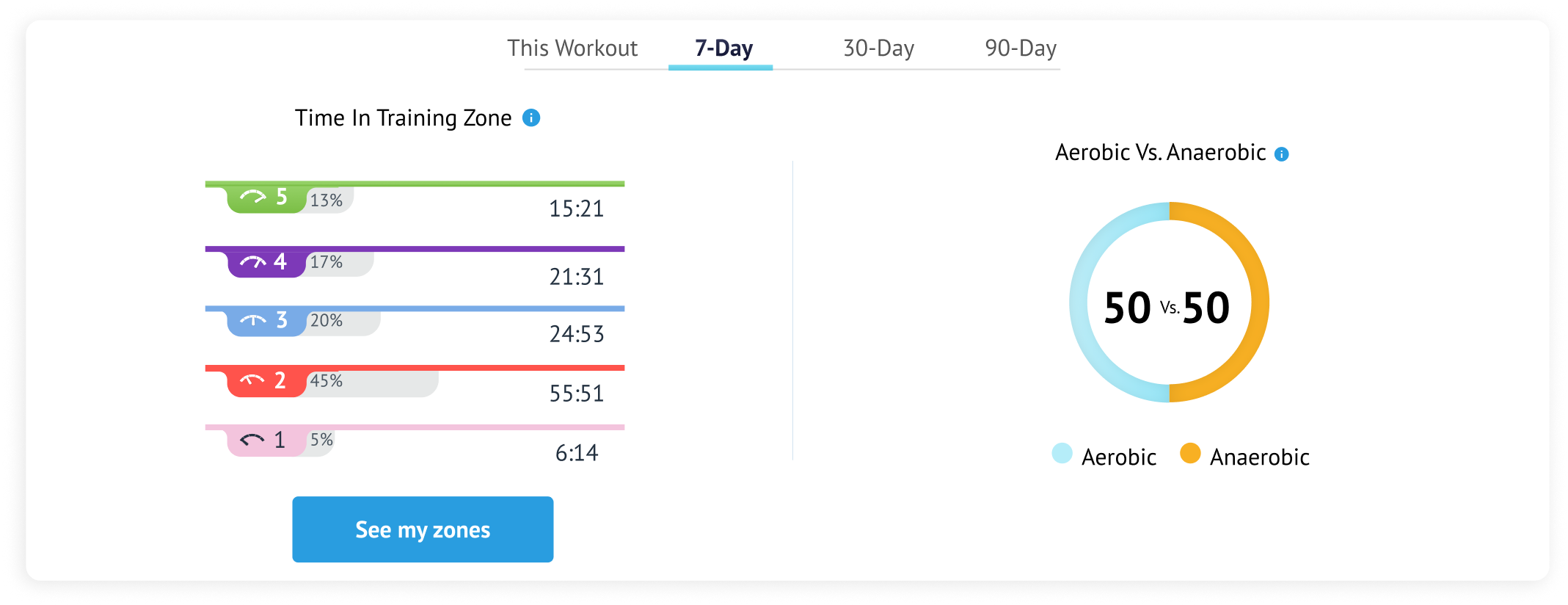
Key Takeaway
Metrics on your athletes load, technique and effort will offer you great insights into their swimming performance. You will start seeing patterns in metrics they excel in and identify others they need to improve on. Low scores will offer your swimmers the greatest opportunities for improvement. Don’t focus on the score, focus on what you can change in your training plan to impact them positively.
Keep in mind that there will come a time where optimizing strengths will yield marginal improvements. Identifying and mastering athlete weaknesses can be the best return of investment. All you have to do is track their metrics, set realistic goals and help them outperform themsevles every day. Practice will make perfect, and results will follow.
Next, learn: Get FIT with TritonWear, Adjust.

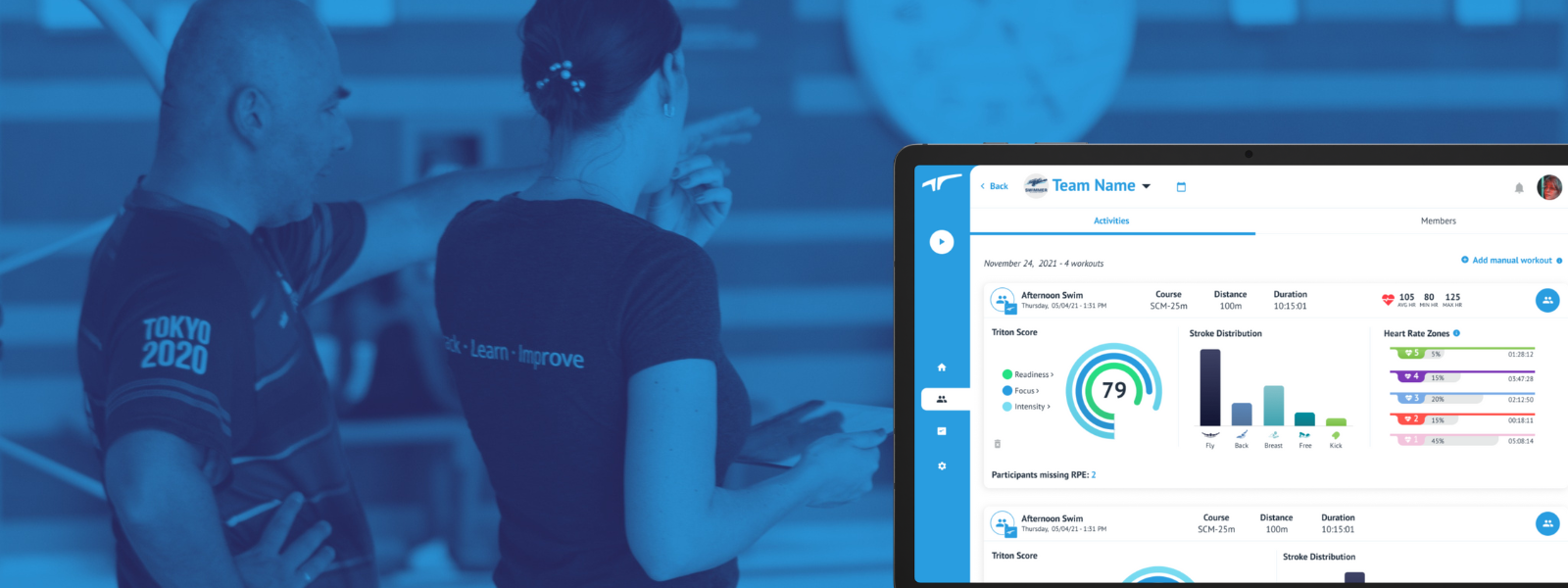

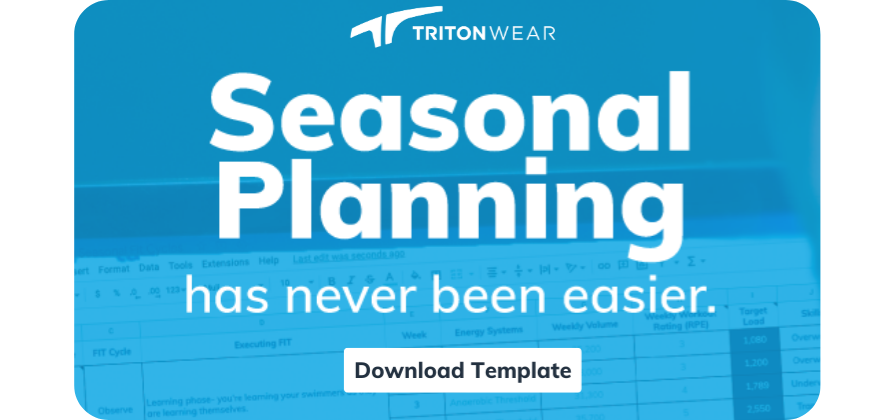

.png)
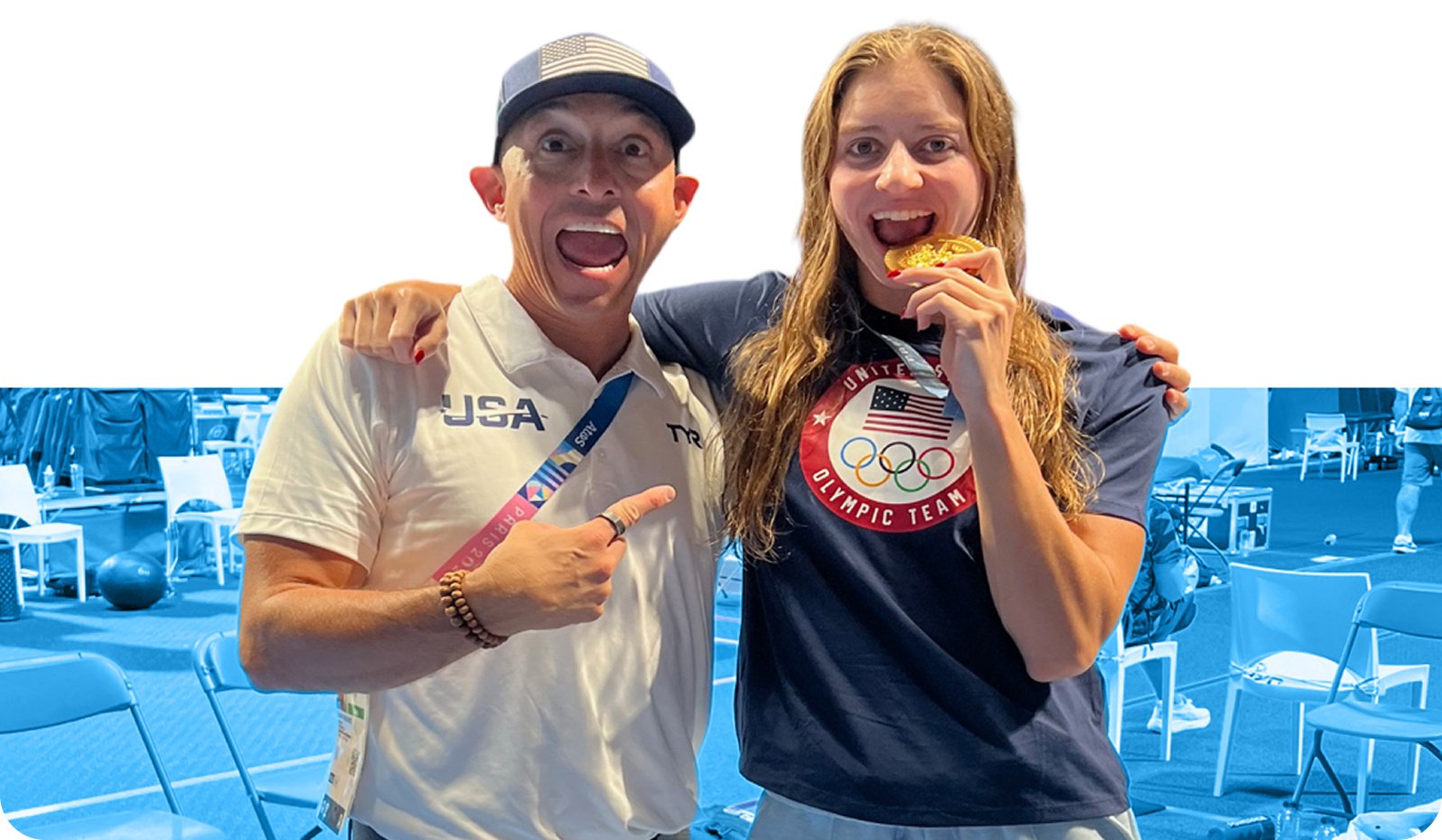
.png)